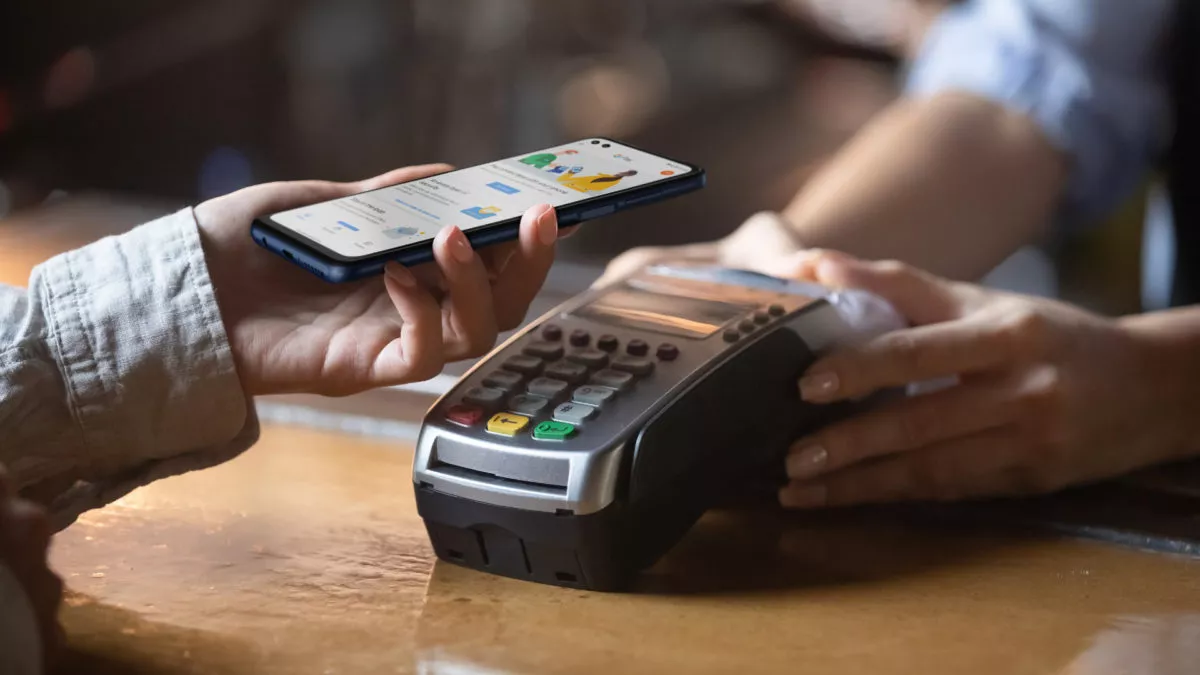
Cookies and Privacy
We use cookies to ensure that we give you the best experience on our website. To learn more, go to the Privacy Page
 General
General
FC has evolved from a quality-of-life feature to something many of us rely on every day.
Most smartphones have Near Field Communication, or NFC technology, built in these days. If you’ve ever used a mobile payments app like Samsung Pay or Google Pay, you already know how NFC works. In a nutshell, it is a proximity-based wireless communication standard. Unlike Wi-Fi or Bluetooth, however, NFC interaction is limited to an extremely short range. Besides smartphones, you can sometimes find NFC on tablets, speakers, collectibles, and even gaming consoles like the Nintendo Switch and 3DS.
Even though NFC may seem a bit lackluster on paper because of its short wireless range, it’s still a convenient feature that many of us take for granted every day. So in this article, let’s take a quick look at what NFC is and how it works. Later, we’ll also discuss where you’re most likely to encounter the technology in the real world.
QUICK ANSWER
NFC, or near-field communication, is a short-range wireless technology that allows your phone to act as a transit pass or credit card, quickly transfer data, or instantly pair with Bluetooth devices like headphones and speakers
We gave you a brief answer to what it is already, but how does NFC work? NFC isn’t some radically new technology. It’s simply an evolution of RFID (radio frequency identification) technology that has already been around for decades. If you’ve ever used a key card to access an office building or hotel room, you’re already familiar with how it works.
Both RFID and NFC operate on the principle of inductive coupling, at least for short-range implementations. This essentially involves a reader device passing an electric current through a coil, which in turn generates a magnetic field. When you bring a tag (with its own coil) near the reader, the magnetic field then induces an electric current within the tag — sans any wires or even physical contact. Once the initial handshake is complete, stored data on the tag is wirelessly transmitted to the reader.
NFC is based on RFID technology, but has a much lower transmission range.The key distinction between RFID and NFC lies in their transmission ranges — the former is often used over longer distances. For example, some regions automatically collect road tolls through RFID. Tags are usually affixed to vehicle windshields and you simply have to drive through the toll booth. Communication can take place over even longer distances (think a hundred feet or more) if the RFID tag is equipped with a power source.
NFC, however, only has a maximum range of a few centimeters, at most. And in most smartphone-related applications, you’ll find that the software will only initiate communication if there’s physical contact. This is to prevent accidental triggers — especially important now that the technology is used for transferring sensitive data.
Another noteworthy point is that devices can act as either an NFC reader or tag. This bidirectional capability allows you to use one piece of hardware — such as your smartphone — for all kinds of different applications.
In Western markets, NFC has been a staple feature on smartphones for several years at this point. The Google Nexus S was the first Android device to include it all the way back in 2010. Apple also eventually embraced the technology in 2014 — NFC is present on every iPhone since the 6. Similarly, wearable devices, ranging from fitness trackers like the Mi Band to smartwatches like the Apple Watch, also include it.
Most smartphones and wearables are equipped with NFC these days.These days, only lower-end devices tend to not come with NFC. That said, the importance of NFC may vary depending on the region. To that end, some manufacturers, like Xiaomi, omit the coil in certain markets like India due to the technology’s low adoption.
NFC adoption has improved significantly in recent years. Here are a few popular use-cases of the technology:
NFC is far from the only wireless communication protocol. In fact, most devices already include similar technologies such as Bluetooth and ultra-wide band (UWB). So why include another?
One of NFC’s biggest strengths is that it does not require pairing or manual input to establish a connection — tapping takes less than a second. Bluetooth devices, by contrast, have to be paired with each other, which is kind of a cumbersome process.
NFC is also significantly more energy-efficient than Bluetooth and UWB since the transmission range is extremely short. Most smartphones ship with the NFC radio enabled by default, while turning off Bluetooth is often the first battery-conserving suggestion.
NFC is less power hungry and faster to use compared to Bluetooth.In fact, NFC’s lower power draw also allows certain devices like the iPhone to enable it in emergency scenarios. This means that even if your phone runs out of juice, it will send just enough power to the NFC chip for you to access your campus, hotel room, or car.
While cars are starting to adopt UWB tech for keyless entry, it’s nowhere near as efficient as NFC. To that end, it’s not surprising that many automakers implement the latter as a fallback access mechanism. UWB is also more expensive and most applications currently served by NFC don’t need its positional precision.
Furthermore, with so many NFC use cases already fleshed out, it’s clear that the technology has carved a niche for itself. To that end, adoption is likely only going to improve from here on out.